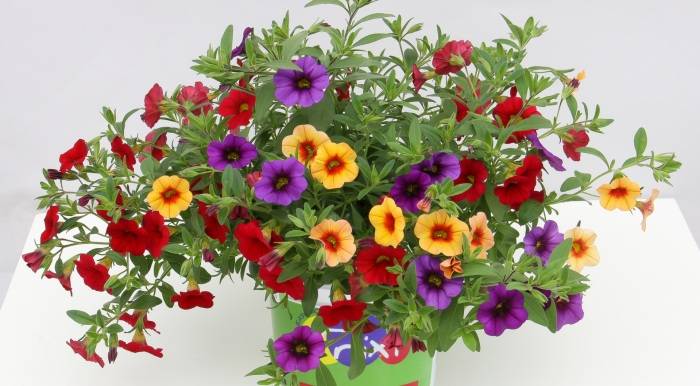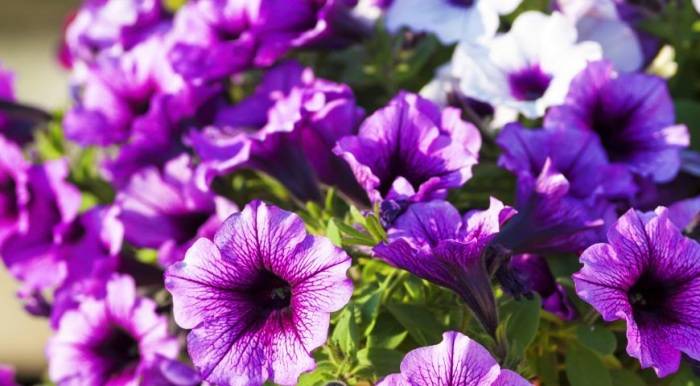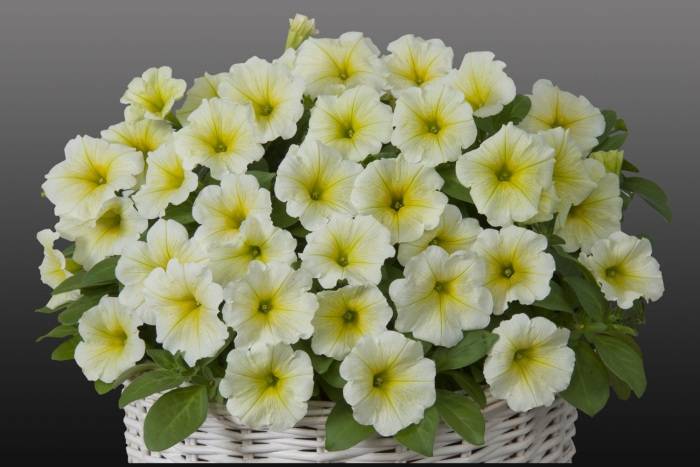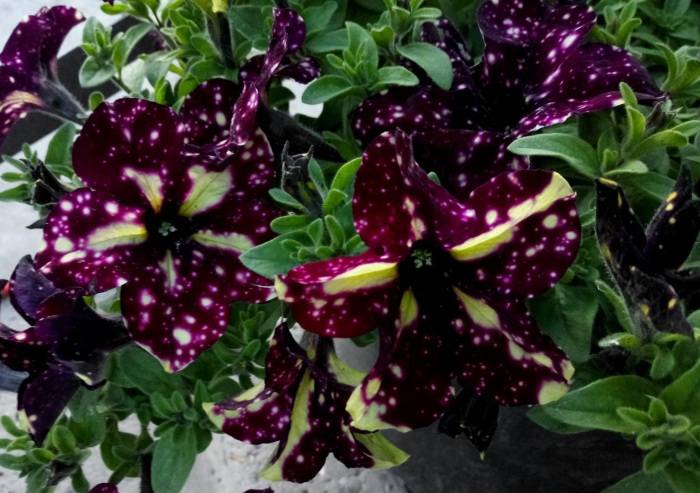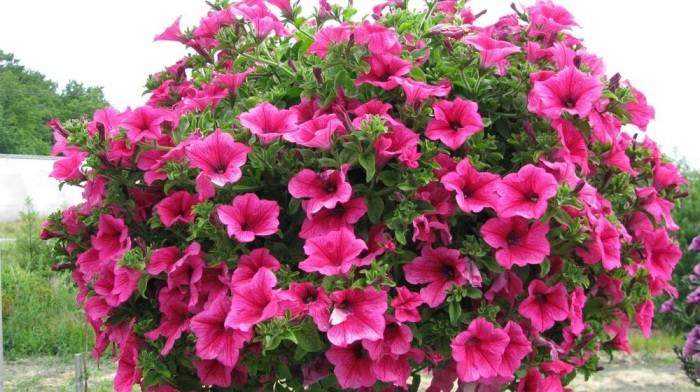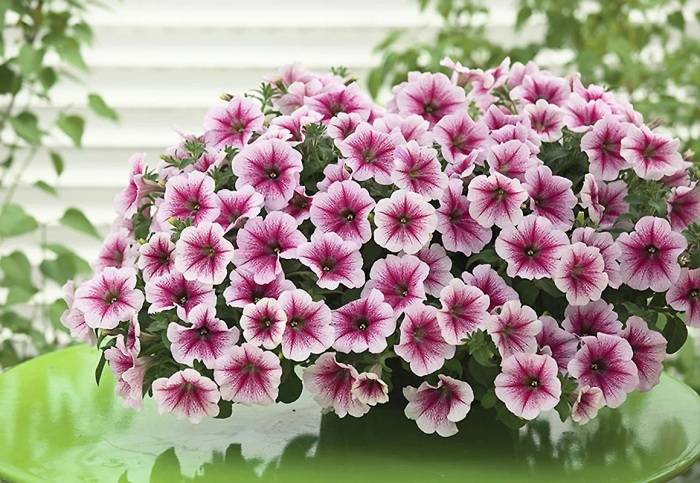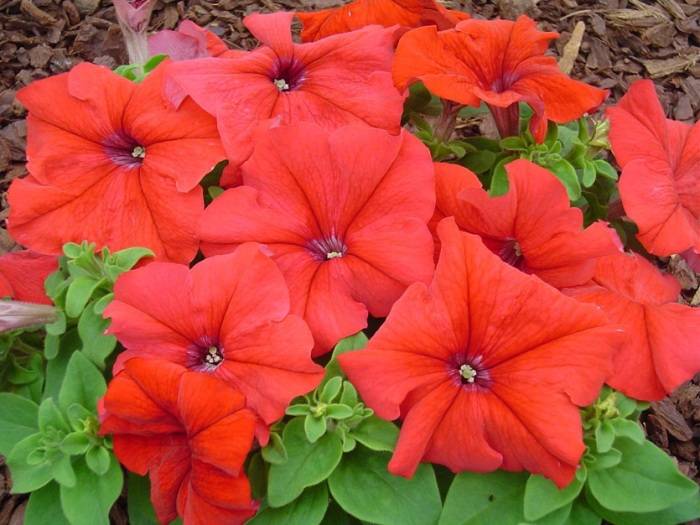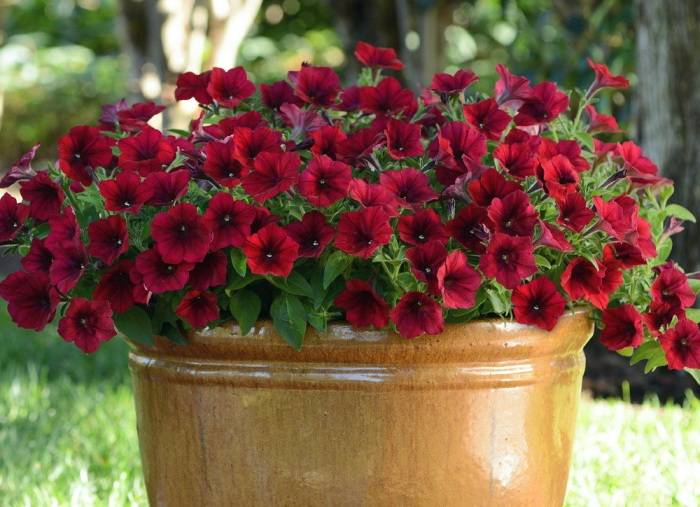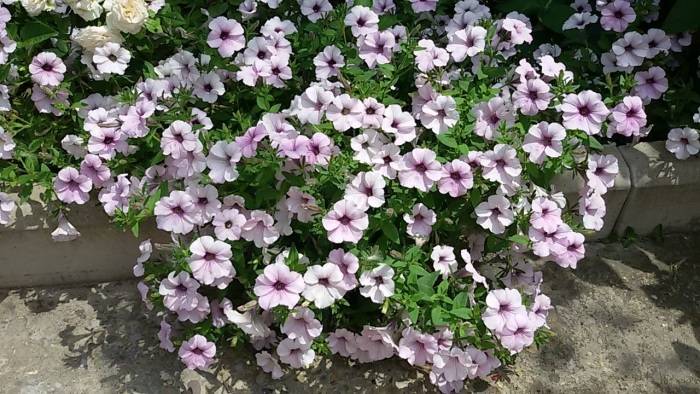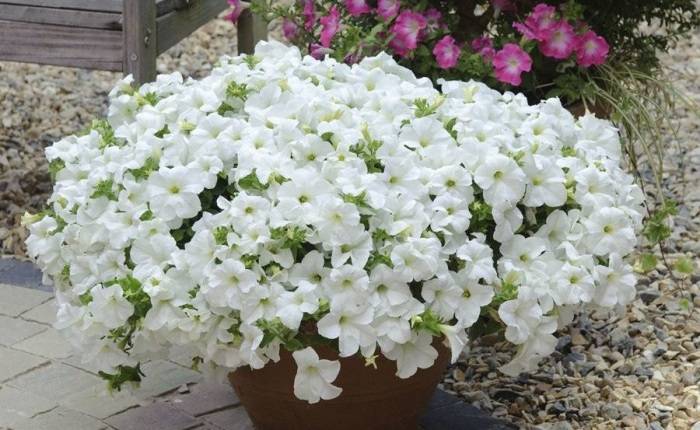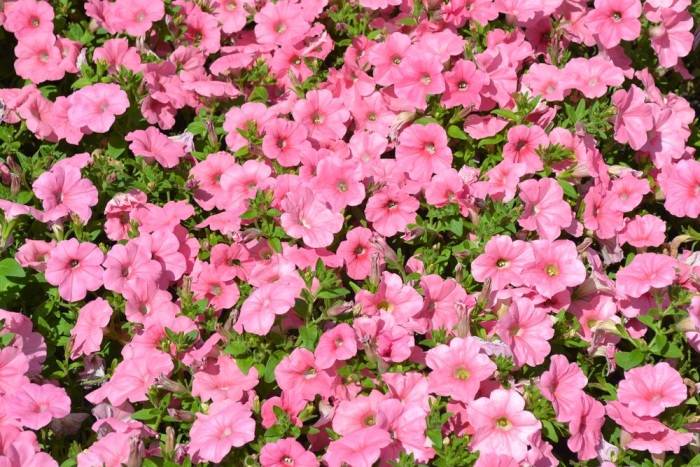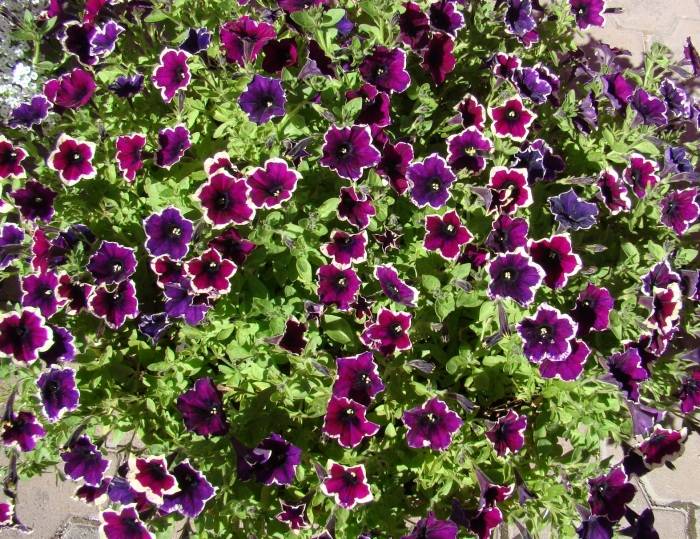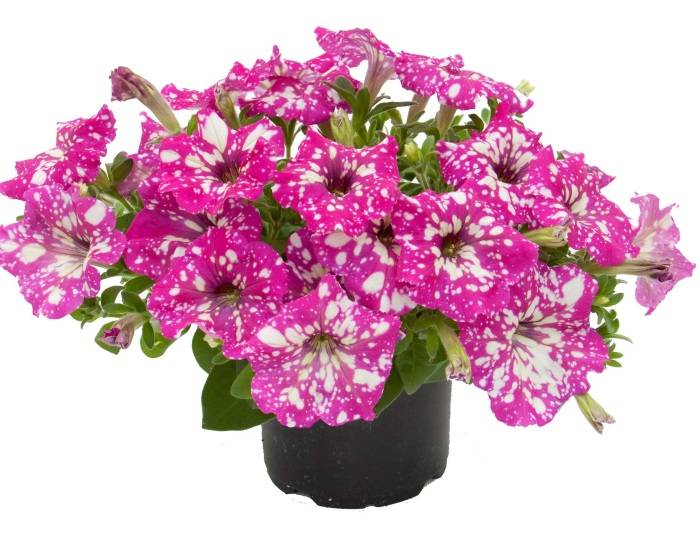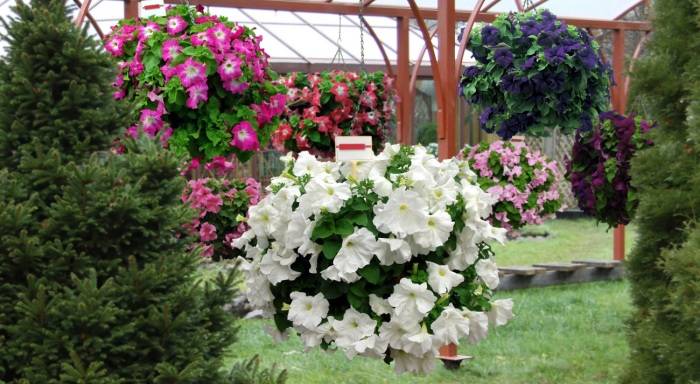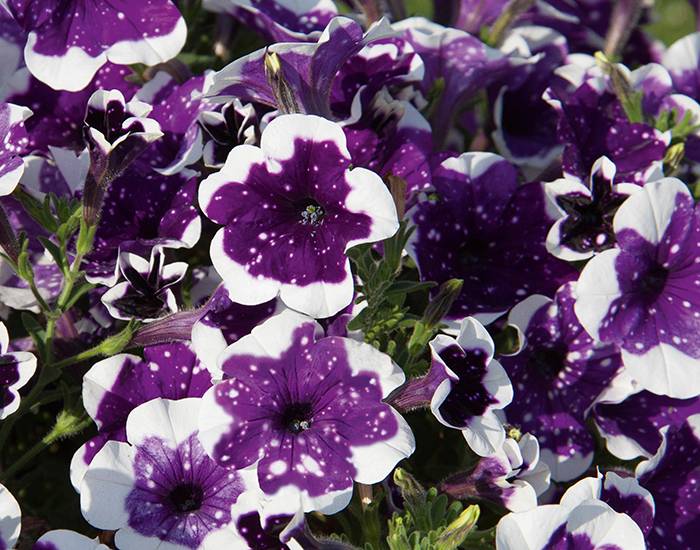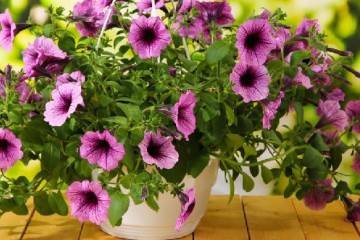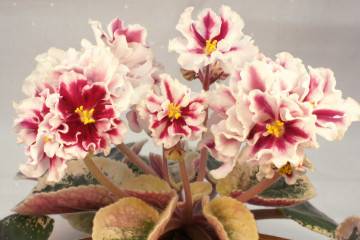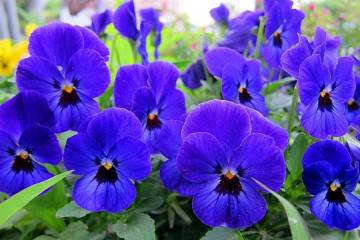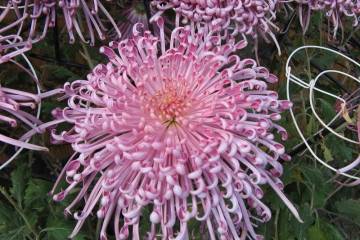Petunia flowers - characteristics of the best varieties of Taidal and La Gioconda
Content:
Bright, profusely blooming petunias have won the hearts of flower growers around the world. In culture, they are grown as annuals, but in nature they are perennial semi-shrubs or herbaceous plants. Petunia is varied in color and shape of flowers. Some varieties can also be grown at home. This plant is unpretentious in care and multiplies easily, but there are nuances in its cultivation.
Briefly about the petunia flower
The genus petunia belongs to the large and varied family of Solanaceae. Currently, various scientists distinguish between 15 and 40 species. Originally Petunia, as this flower is called in Latin, from the rainforests of the South American continent. Found in Argentina, Brazil, Uruguay, Paraguay, Bolivia.
Depending on the variety, the stems can be erect or creeping on the ground. Shoots are always pubescent. The height of the bush varies from 10 cm to 1 m. The leaves are sessile, like those of tobacco, alternate, of different sizes. The foliage is covered with hairs.
Petunia came to Europe at the beginning of the 19th century. thanks to botanist J.-B. Lamarck, who gave the first description of it. The first hybrid petunia appeared in 1839, and in 1855 a terry variety was bred. Varieties with large flowers were created much later, in 1881. XX century. ampelous petunias appeared.
Classification of petunias by groups
In this plant, breeders distinguish the following large variety groups.
Ampel petunias, due to their flowing shoots, are best suited for hanging planters. The length of the stems varies from 30 to 120 cm. The bushes abundantly cover the funnel-shaped flowers. Most often grown as annuals.
Cascading petunias are a subspecies of ampelous. Can be grown not only in hanging pots, but also in a flower bed.
Calibrachoa are flowers that look like petunia, but are not. They also belong to the Solanaceae family. Shoots are long, up to 1.5 m, lignified at the base. The flowers are numerous, but small, up to 3 cm in diameter. The middle of the corolla is always colored in a darker color (in natural species, yellow or black).
Floribunda is a large-flowered, profusely flowering variety that easily tolerates the vagaries of the weather. The most cold-resistant variety.
Shrub - the most common cultivar group with flowers of different sizes. Perfect for monoclumbums and curbs. Most often grown as annuals.
Flower size classification
Depending on the diameter of the corolla, experts distinguish the following varieties.
- milliflora. The smallest-flowered species. Compact bushes are covered with flowers up to 4 cm in diameter. Due to the size of the corolla, the buds are less damaged by the wind;
- multiflora - multiflorous petunia. Corolla diameter reaches 8 cm;
- petunia grandiflora forms fewer flowers than the previous species, but they are very large, up to 16 cm in diameter.However, due to their size, they are most susceptible to weather damage.
Color classification
The color of the petals can be monotonous, with a border, large spots and small specks, colored veins. The color can be very different: red, purple, yellow (for example, petunia Sophistika), white, orange, pink, lilac, dark blue.
Description and characteristics of the best varieties
There are a great many varieties of petunias, but some of them have earned the special love of flower growers.
Petunia Taidal grows up to 60 cm. The diameter of the flower is up to 6 cm. Refers to petunia multiflora. Abundant flowering. The shoot length can reach one and a half meters. Resistant to severe climatic conditions. It can exist both as an annual and as a perennial flower. The variety has a variety of petal colors.
Petunia Gioconda is one of the leaders in terms of the number of different shapes and colors of flowers. La Gioconda is a one-year hybrid. It will delight with flowering for a long time, since it can withstand temperatures up to -8 ° C.
Petunia Stormy sky - a variety with an unusual color of petals. They are dark wine-red in color with white dots. In strong light, diamond-shaped strokes of a pale yellow color appear on the petals.
Petunia Surfinia is a Japanese variety group. All corollas of this flower have a dark pharynx, regardless of the variety. Common petunias are delicate flowers, but Surfinia was bred specifically for an unfavorable climate. It tolerates wind and rain better than other varieties.
Petunia Opera is a variety of Japanese hybrids. Refers to the ampelous variety. The group includes varieties of very different colors, including white.
Petunia Limbo is a variety of large-flowered petunias. At the same time, it belongs to the dwarf varieties, in the garden the bush does not exceed 20 cm. Corollas can reach 13 cm in diameter.
Petunia Easy Wave is an American variety group. Refers to the ampelous variety. Possesses a pleasant sweetish smell.
Tornado is a large, fast-growing ampelous variety. This group includes the Typhoon variety, which has a pleasant aroma.
Fanfare is the most drought-resistant variety. The red variety is especially effective in this large-flowered variety group. It reproduces only vegetatively.
Ramblin is a series of cascading petunias. They are capricious, but if the conditions of keeping are observed, the plants will be completely covered with flowers.
The night sky is a separate variety, beloved by gardeners. The petals are dense blue-violet with white blotches. Unpretentious in content. Grows well in hanging pots.
The Shock Wave series unites ampel varieties, including terry ones. Blooms early. In order for the culture to bloom better, you need to remove unnecessary seed pods. Smells good.
Rome Magenta is a variety with velvety, deep purple petals with a light lemon or cream border. Forms a ball completely covered with flowers.
Baby Doll has a bright pink corolla with white splashes.
Spherica is a large-flowered ampelous variety that forms dense balls of various colors. There are varieties with double flowers.
Burgundy is an ampelous small-flowered variety of wine-red color.
Mambo is a multi-flowered cultivar group.It tolerates adverse weather conditions well, and grows in arid climates.
Pendolino is a multiflora with small flowers. The earliest flowering species. Reminiscent of calibrachoa.
Rim Shanti is a purple cascading small-flowered vegetative cultivar with a white border.
Eagle is a large-flowered series of Japanese selection. The bushes are compact.
Icy Sky is a purple ampelous variety with splashes and a white border.
Hulahup is a variety group of grandiflora of various colors. They are all united by a white border. Bloom early.
Tumbelina is a variety of vegetative terry petunias. The flowers have a strong scent. Even a strong enough wind will not ruffle the double buds.
Flowering features
The flower of this plant is most often a single large and sitting on a short pedicel extending from the leaf sinus. It consists of a corolla and a five-leaf calyx. The corolla is formed by five fused petals, so it resembles a funnel.
After flowering, a bivalve capsule is formed, which cracks when small and light seeds ripen.
In shape, the flowers can be simple or double, as well as fringed. This plant has a long flowering period: from the beginning of July to the very frost. In the southern regions, petunias bloom in November.
After sowing, it blooms in at least 2.5-3 months. Each flower lasts up to 5 days. The flowers have one drawback: they are so delicate that they can easily be disheveled by the wind. Also, the petals are severely damaged by precipitation. But since the buds are formed in a week, soon the petunia will again delight the owner with bright phonographs. Therefore, when choosing a petunia, a flowering dacha for a gardener is provided for 3-4 months.
In order for the plant to bloom as abundantly as possible, its roots need space, so do not thicken it too much. When planting in a pot, it must be borne in mind that for maximum comfort, each petunia needs 10 liters of soil.
During the flowering period, abundant watering is required. If the plant is grown in a container, then watered daily, and in hot weather - twice a day (morning and evening). On the flowerbed, they look at the condition of the soil. There should be no stagnant water, so the pots should have drainage holes to drain excess moisture. An important condition: the water must be settled and not lower than the ambient temperature.
For feeding during flowering, complex phosphorus-potassium fertilizers with the addition of nitrogen are used.
Vegetative petunia - what is it
The seeds of such petunias either do not form, or do not have a similarity, so it is useless to sow them. If, nevertheless, it is possible to achieve seedlings, then they may lose the varietal characteristics of the mother plant. But when grafting, all the characteristics of the variety are preserved.
For reproduction, shoots with 5 leaves and at least two internodes are cut from the mother plant. Before planting in a nutrient substrate (perlite, vermiculite or peat tablet), 2-3 lower leaves are removed from the cuttings. Cover the pot with plastic wrap. Moisten the soil daily and ventilate for half an hour.
Possible growing problems
The petunia flower is affected by the following pests:
- thrips;
- aphid;
- pores (white midges);
- spider mite;
- whitefly.
For all these parasites, insecticide treatment will help.
Most often, perennial and annual petunias are affected by fungal diseases - late blight, black leg, phylosticosis, powdery mildew and gray rot. These diseases are the scourge of the Nightshade. Treatment with fungicides will help from them.
Use in landscape design
Petunias are used to create monoclumbums of various shapes, as borders, in vertical gardening. They are perfect in hanging planters and drawers on the balcony or window. Petunias are often used in oriental rock gardens to decorate large boulders. These flowers are interestingly combined with conifers and cereals.
Thus, petunia is a beautiful plant with a wide variety of cultivars. It is relatively unpretentious and will delight with flowering for several months. And culture has universal applications in landscape design.



